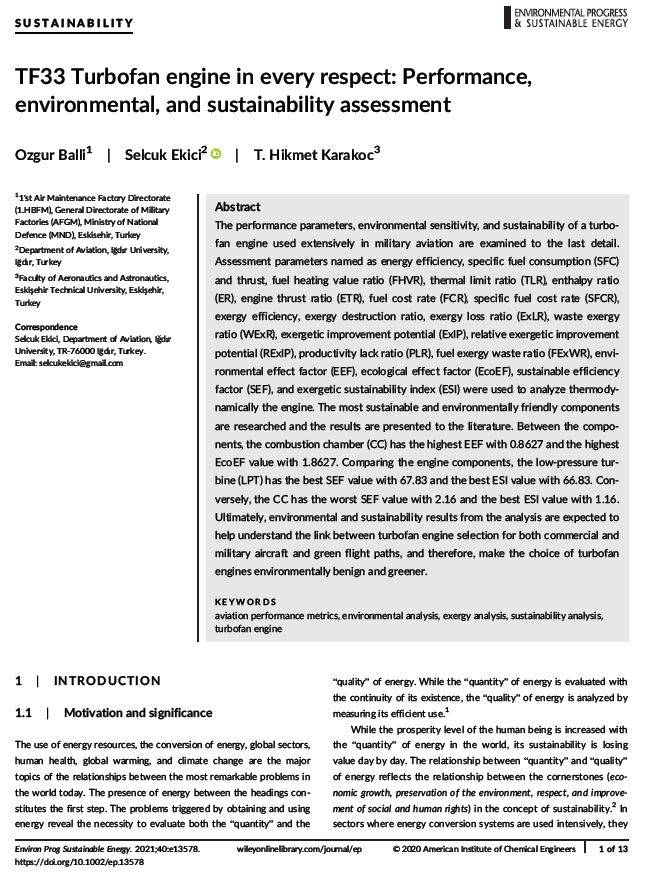Havacılık Yönetimi Bölümü, Bölüm Başkanı Doç. Dr. Selçuk Ekici'nin "TF33 Turbofan engine in every respect: Performance, environmental, and sustainability assessment" başlıklı makalesi SCI statüsündeki Environmental Progress & Sustainable Energy dergisinde yayımlandı. Makaleye ait özet metin aşağıda sunulmaktadır.
The performance parameters, environmental sensitivity, and sustainability of a turbofan engine used extensively in military aviation are examined to the last detail. Assessment parameters named as energy efficiency, specific fuel consumption (SFC) and thrust, fuel heating value ratio (FHVR), thermal limit ratio (TLR), enthalpy ratio (ER), engine thrust ratio (ETR), fuel cost rate (FCR), specific fuel cost rate (SFCR), exergy efficiency, exergy destruction ratio, exergy loss ratio (ExLR), waste exergy ratio (WExR), exergetic improvement potential (ExIP), relative exergetic improvement potential (RExIP), productivity lack ratio (PLR), fuel exergy waste ratio (FExWR), environmental effect factor (EEF), ecological effect factor (EcoEF), sustainable efficiency factor (SEF), and exergetic sustainability index (ESI) were used to analyze thermodynamically the engine. The most sustainable and environmentally friendly components are researched and the results are presented to the literature. Between the components, the combustion chamber (CC) has the highest EEF with 0.8627 and the highest EcoEF value with 1.8627. Comparing the engine components, the low‐pressure turbine (LPT) has the best SEF value with 67.83 and the best ESI value with 66.83. Conversely, the CC has the worst SEF value with 2.16 and the best ESI value with 1.16. Ultimately, environmental and sustainability results from the analysis are expected to help understand the link between turbofan engine selection for both commercial and military aircraft and green flight paths, and therefore, make the choice of turbofan engines environmentally benign and greener.
https://aiche.onlinelibrary.wiley.com/doi/full/10.1002/ep.13578
